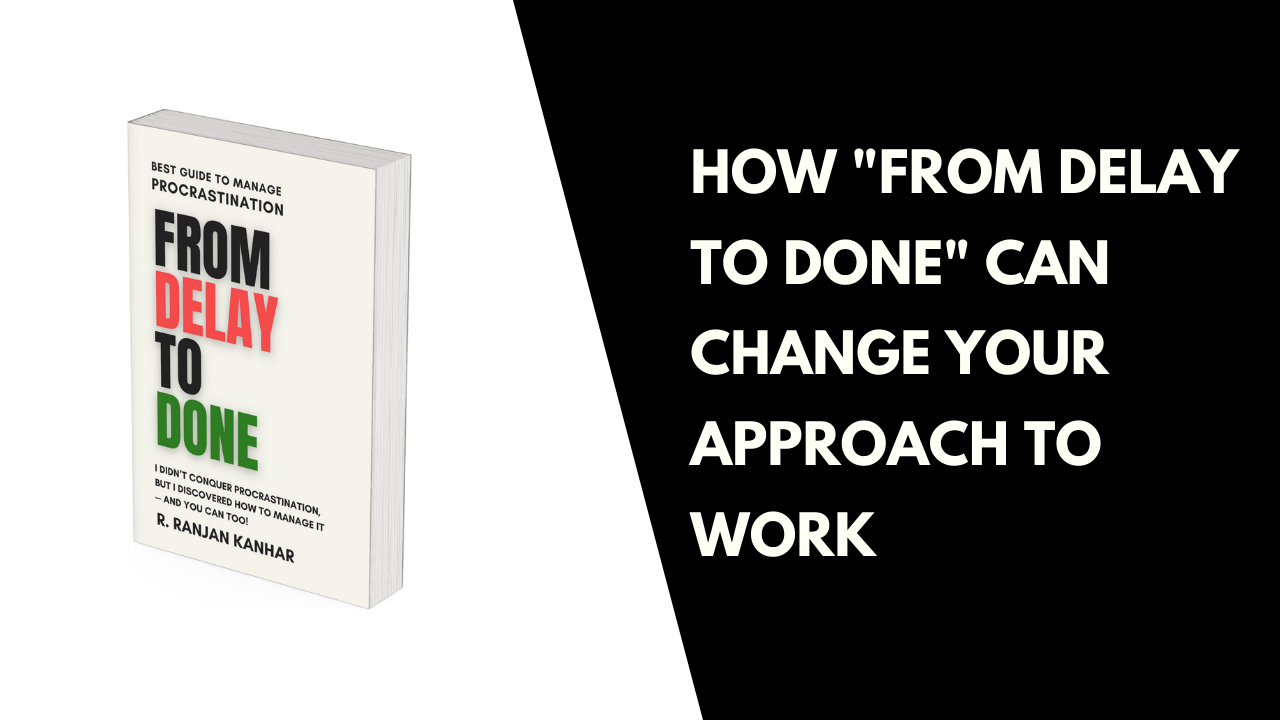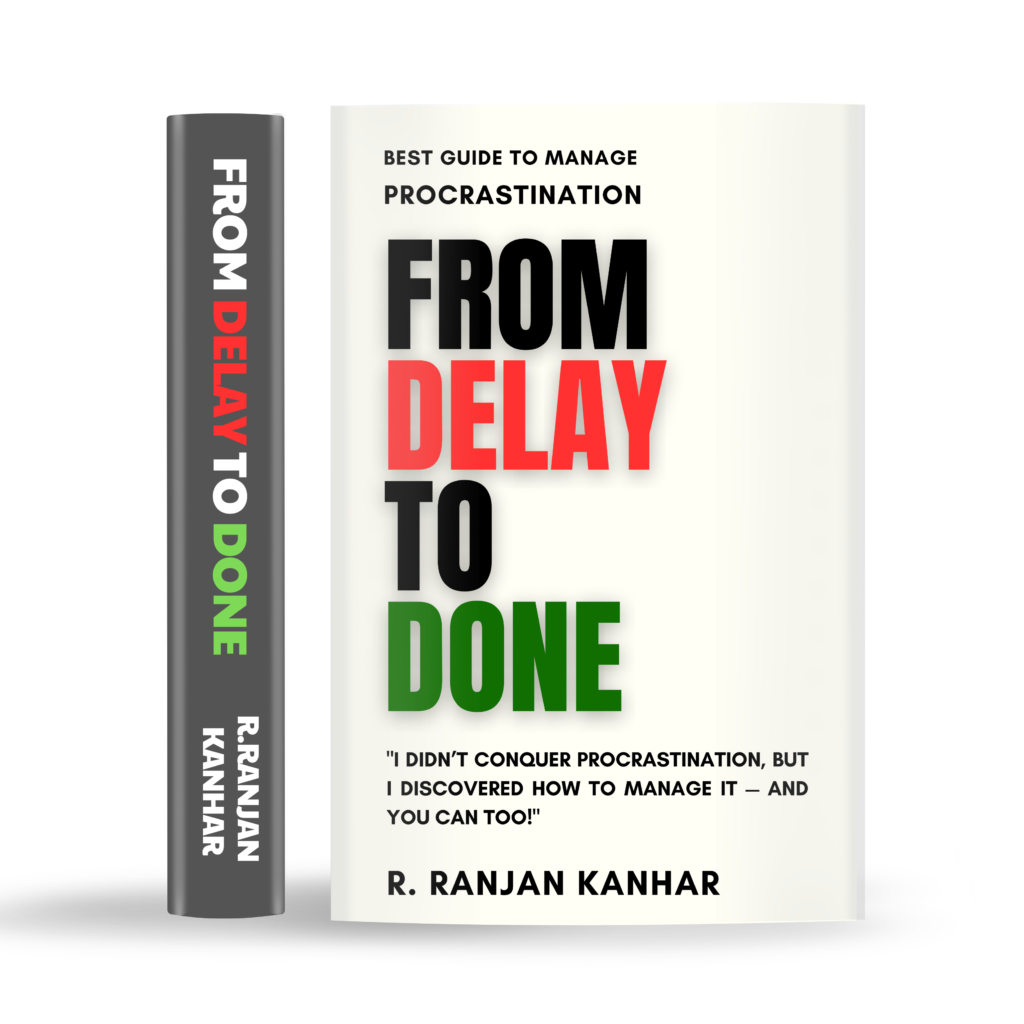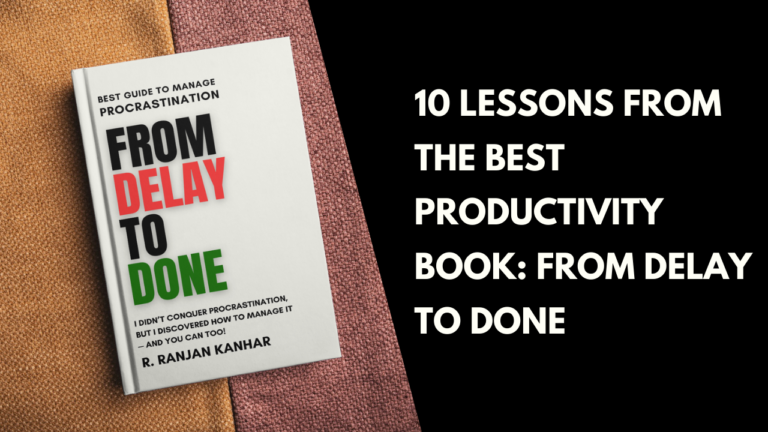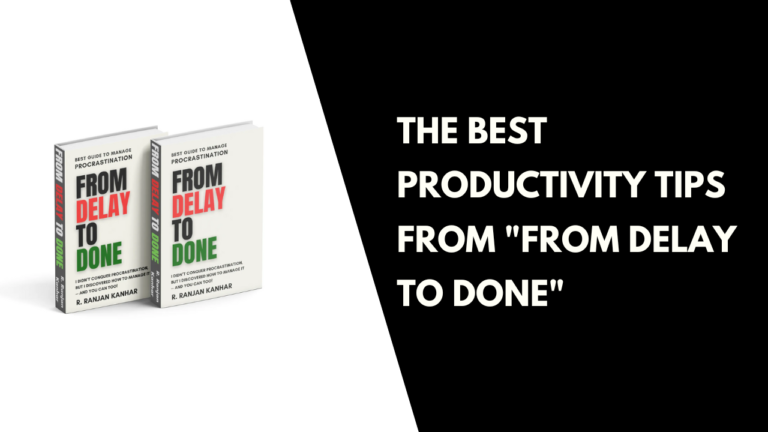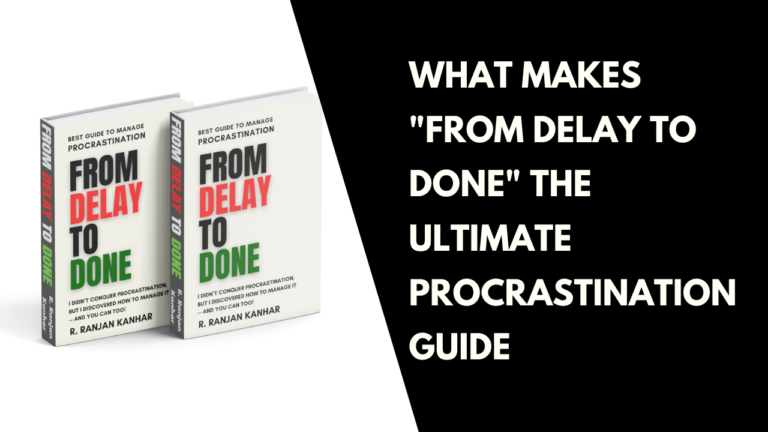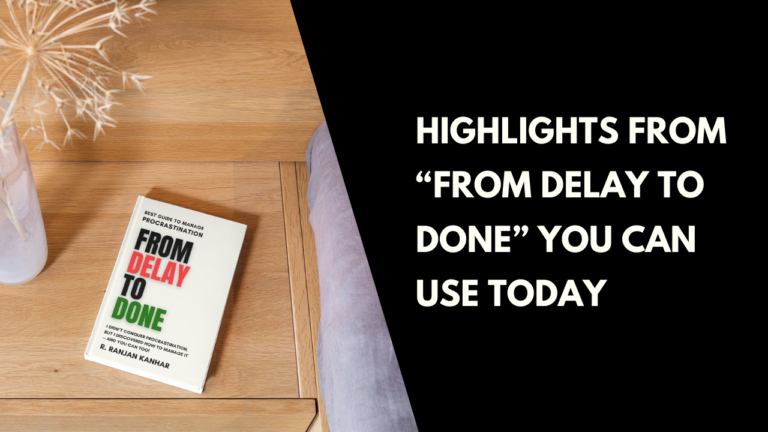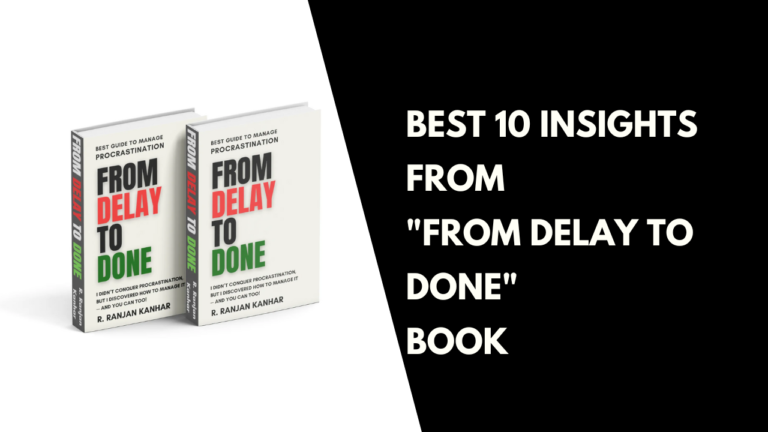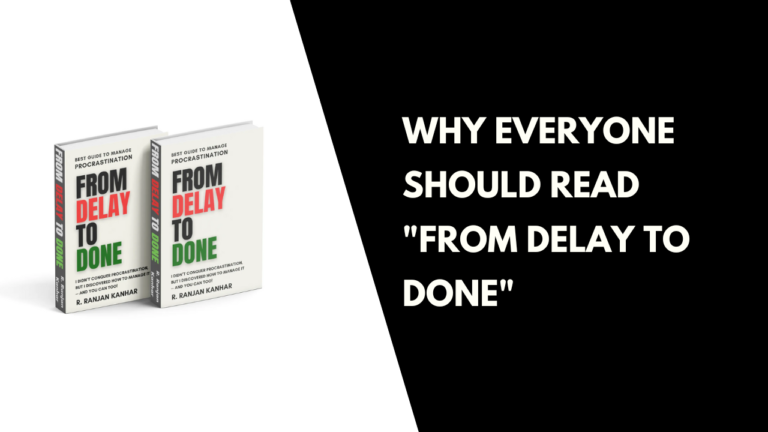How “From Delay to Done” Can Change Your Approach to Work
How “From Delay to Done” Can Change Your Approach to Work
If you’ve ever struggled with procrastination, you know how it feels to be trapped in an endless cycle of delays and missed opportunities. What if I told you there’s a way out of this cycle? My book, From Delay to Done, isn’t just a guide; it’s a transformational journey that has helped countless individuals change their approach to work and reclaim their productivity.
Table of Contents
ToggleIn this blog, we’ll explore how From Delay to Done Can Change Your Approach to Work by diving into its core principles, relatable examples, and actionable insights.
Understanding Procrastination: The Root Cause
Procrastination isn’t just about laziness. It’s often tied to deeper issues like fear of failure, perfectionism, or even feeling overwhelmed. In From Delay to Done, I delve into the psychological reasons behind procrastination, offering readers a new lens to view their habits.
For instance, take the story of Priya, a young entrepreneur. She had big dreams of launching her own e-commerce store but spent months tweaking her website instead of going live. Priya’s procrastination wasn’t due to laziness—it stemmed from her fear of judgment. By addressing the root cause using the strategies in the book, Priya overcame her fears and successfully launched her business.
When you understand the “why” behind your delays, it becomes easier to take the first step toward change. This is where From Delay to Done Can Change Your Approach to Work by helping you identify and tackle the emotional and psychological barriers holding you back.
The Power of Micro-Actions
One of the standout strategies in From Delay to Done is the concept of micro-actions. Often, we delay tasks because they feel monumental. Breaking them into smaller, manageable steps can make a world of difference.
Imagine Ramesh, an office employee, tasked with preparing a quarterly report. The thought of compiling data from multiple departments felt overwhelming, so he kept putting it off. After reading From Delay to Done, Ramesh learned to break his task into micro-actions:
Gather data from one department.
Draft a basic outline for the report.
Schedule 30-minute blocks to refine each section.
This approach not only made the task less intimidating but also boosted his confidence with each small win. If you’ve ever felt stuck, try applying this principle—you’ll be amazed at how quickly progress happens.
Time Blocking: Your Secret Weapon
Another powerful technique in From Delay to Done is time blocking. This method involves scheduling dedicated blocks of time for specific tasks, ensuring focused and uninterrupted work.
For example, Meera, a marketing manager, often found herself drowning in emails, meetings, and last-minute deadlines. She never had time for deep work. After adopting the time-blocking strategy from From Delay to Done, Meera created a schedule like this:
9:00 AM – 10:30 AM: Creative brainstorming for campaigns.
10:30 AM – 11:00 AM: Respond to emails.
11:00 AM – 12:00 PM: Team meetings.
2:00 PM – 4:00 PM: Deep work on presentations.
This structured approach transformed Meera’s workday. By prioritizing her most important tasks and setting boundaries, she became more productive and less stressed. Time blocking is a game-changer, and it’s one of the reasons why From Delay to Done Can Change Your Approach to Work effectively.
Overcoming Perfectionism
Perfectionism is a common procrastination trigger. Many of us delay tasks because we want them to be “just right.” But as From Delay to Done emphasizes, progress is better than perfection.
Consider the case of Arjun, a writer who dreamed of publishing his first novel. He spent years rewriting his manuscript because he felt it wasn’t good enough. When he read From Delay to Done, Arjun realized that his pursuit of perfection was holding him back. He committed to completing the manuscript, flaws and all. Eventually, he self-published his book, which received great reviews despite its imperfections.
The lesson here? Done is better than perfect. By embracing imperfection, you’ll move forward faster and achieve more.
The Role of Accountability
Accountability is a recurring theme in From Delay to Done. Sharing your goals with someone you trust—whether it’s a friend, colleague, or mentor—can motivate you to stay on track.
Take Neha, a student preparing for competitive exams. She struggled with sticking to her study schedule until she formed a study group with her peers. By discussing daily goals and reviewing each other’s progress, Neha stayed consistent and performed well in her exams. The support and gentle pressure from her group kept her motivated.
Accountability partners, productivity apps, or even journaling can serve as excellent tools to keep you aligned with your goals.
Real-Life Transformation Stories
One of the most rewarding parts of writing From Delay to Done has been hearing from readers who’ve changed their lives after implementing its strategies. Here are a few:
Rahul, a startup founder, used time-blocking and micro-actions to streamline his operations, doubling his team’s productivity.
Sonal, a working mom, adopted the principle of “just start small” to declutter her home, which had been a source of stress for years.
Vikram, an artist, overcame his fear of sharing his work online and gained a loyal following.
These stories prove that From Delay to Done Can Change Your Approach to Work in ways you might not have imagined.
Actionable Steps to Get Started Today
You don’t need to wait to read the entire book to start making changes. Here are some actionable steps inspired by From Delay to Done:
Identify Your Biggest Procrastination Trigger:
Reflect on why you delay certain tasks. Is it fear, overwhelm, or perfectionism?Start with Micro-Actions:
Break your next big task into the smallest possible steps and complete one today.Try Time Blocking:
Dedicate specific time slots for focused work. Use tools like Google Calendar to plan your day.Embrace Imperfection:
Commit to finishing a task, even if it’s not perfect. You can always improve later.Find an Accountability Partner:
Share your goals with someone and check in regularly.
Why “From Delay to Done Can Change Your Approach to Work”
What sets From Delay to Done apart is its relatable tone and practical advice. This isn’t a theoretical book filled with jargon. It’s a real-life manual for anyone who wants to stop delaying and start doing.
Whether you’re a student, an office employee, or an entrepreneur, the strategies in this book are adaptable to your unique challenges. By implementing these techniques, you’ll not only improve your productivity but also gain a sense of accomplishment and confidence.
Final Thoughts
Procrastination doesn’t have to define your life. With the right mindset and tools, you can break free from its grip. From Delay to Done Can Change Your Approach to Work by showing you how to overcome delays, tackle tasks with confidence, and achieve your goals.
Don’t wait for the perfect moment to take action. Start now. Pick up a copy of From Delay to Done and begin your journey to a more productive, fulfilling life today!
“Stop postponing your dreams! From Delay to Done is your ultimate guide to conquering procrastination. Grab your copy today on Amazon!
